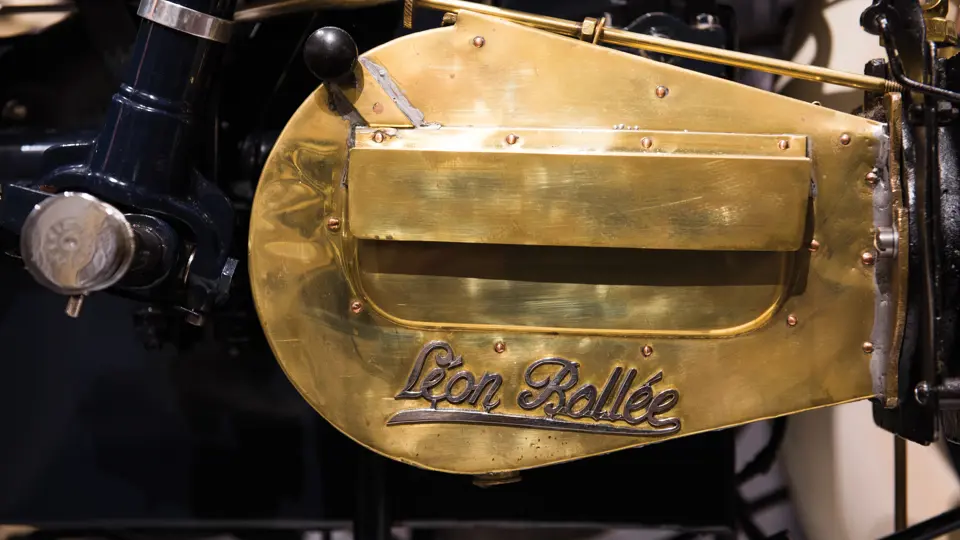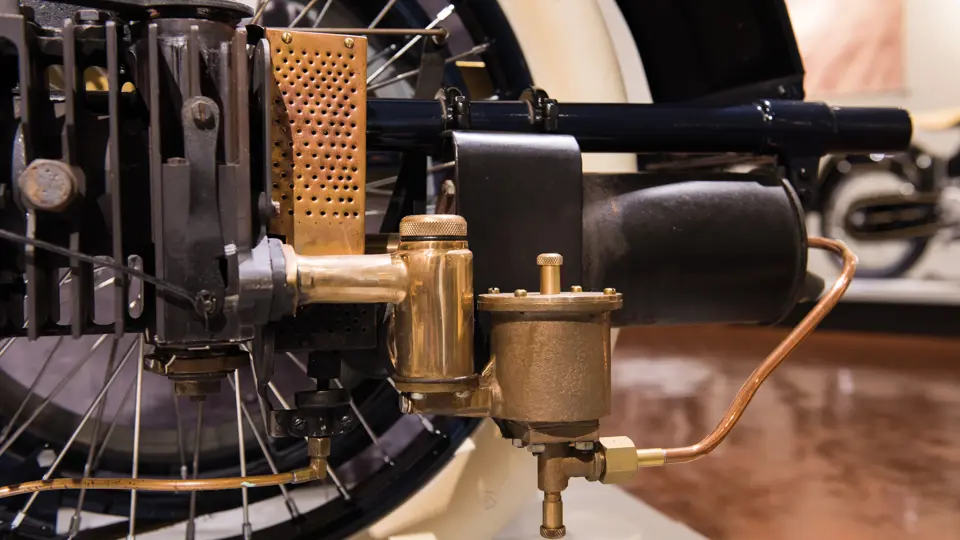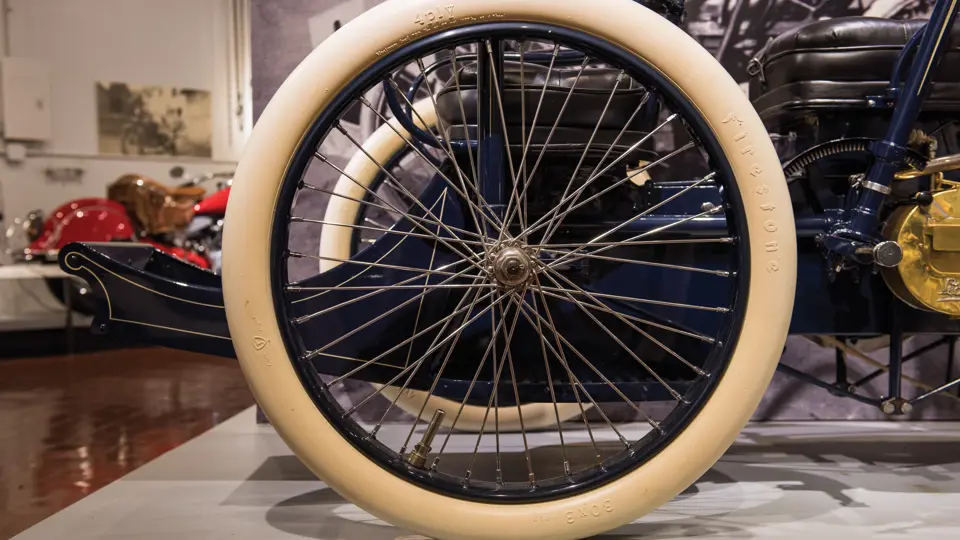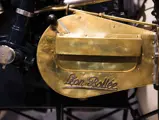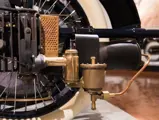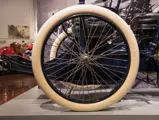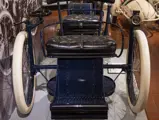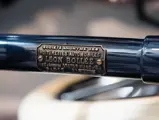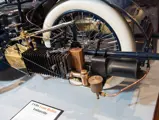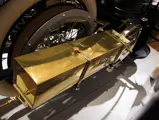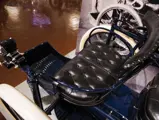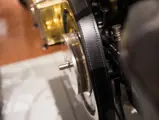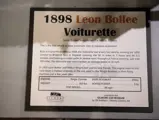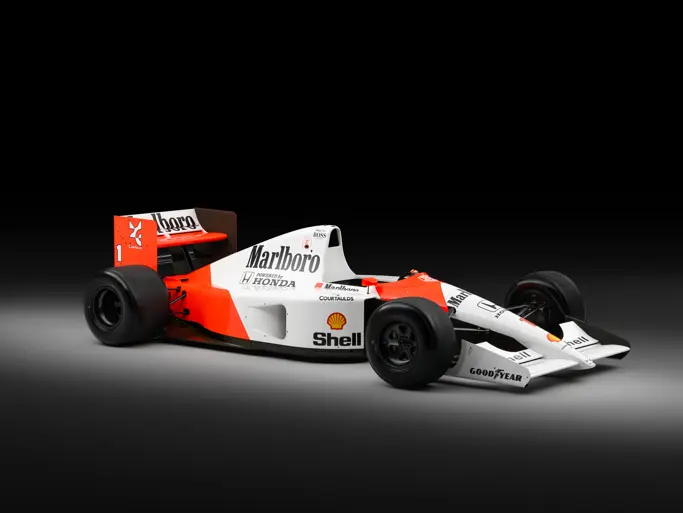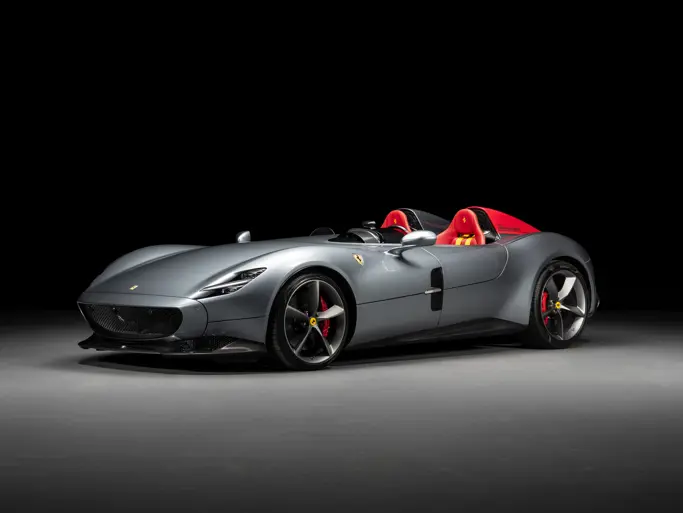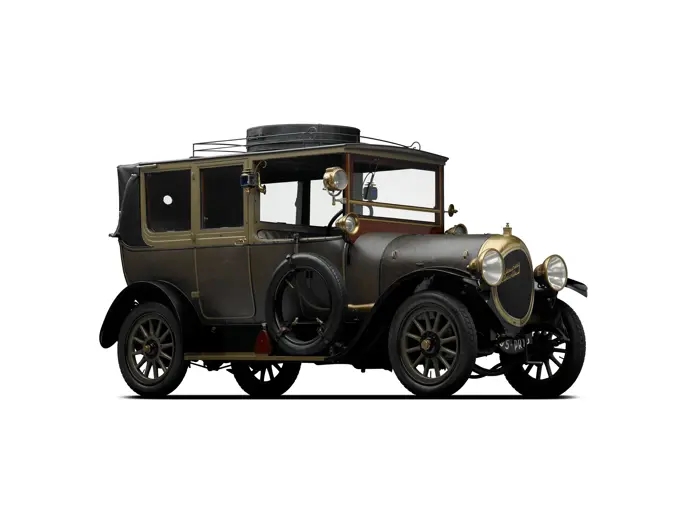2 hp, 882 cc air-cooled horizontal single-cylinder engine, three-speed manual transmission with a belt drive to the rear axle, tubular frame with independent front suspension, and rear axle braking. Wheelbase: 50 in.
Amédée Bollée is a name not often remembered outside of enthusiasts in his home country of France, which is a shame, as he was one of the world’s pioneers in propelled motoring, building his first steam-powered carriage in 1873, twelve years before Karl Benz’s “invention” of the automobile. His sons, Amédée Jr. and Léon, took part in the famous Paris-Bordeaux Race in 1895. Later that same year, Léon Bollée patented an automobile design of his own: a three-wheeled vehicle with tandem seats and a horizontal single-cylinder engine. The Léon Bollée was one of the first of what came to be known as voiturettes, small, lightweight French sporting cars. It became quite popular, to the point where it was manufactured not only in France but also in England, where manufacturing rights were owned by pioneer motoring entrepreneur Harry Lawson.
Operating a Léon Bollée is a fascinating experience. The driver is placed safely behind the passenger (who, in effect, serves as the bumper), with both astride the 882-cubic centimeter engine, which turns at about 800 rpm. Steering is by a wheel placed between the driver’s knees and turned by his right hand, while his left hand operates a lever that, depending on its movement, changes gears, applies the brake, and engages the belt drive to the rear axle.
A Léon Bollée set a world record for 100 kilometers in 1898 at Etampes, covering the distance in 1 hour and 58 minutes. It was, at the time, the fastest gasoline-powered vehicle on European roads.
The example offered here is believed to have once been part of Harrah’s Automobile Collection, after which it was acquired by Ken Behring’s Blackhawk Collection in Danville, California. It was restored in the mid-1980s following its acquisition by Blackhawk, and it remained on display in that famous museum for well over a decade before joining its present owners’ collection in 2000.
During the time in their collection, the car has been very well maintained as the excellent older restoration that it is, with considerable work being put into researching its components and operation. Its history file includes color photographs and directions of the starting and operating procedures, as well as exhaustive research by various libraries and historians into the Bollée company’s history and the maintenance of a “trike.” In addition, a correct carburetor was sourced for the car in Europe, and a new cylinder and cylinder head had been machined to replace the original, which had cracked.
This exciting, pioneering voiturette with proper dating would make an ideal London-to-Brighton competitor, as it is undoubtedly one of the most thrilling early automobiles!





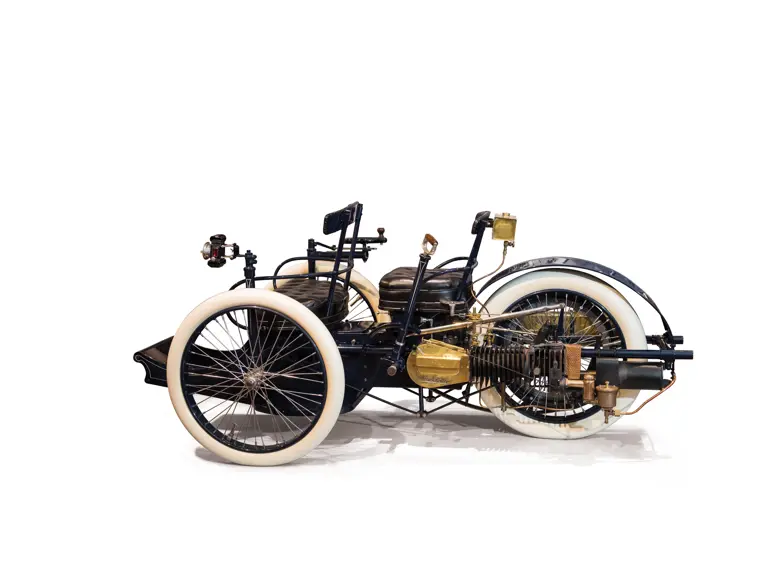


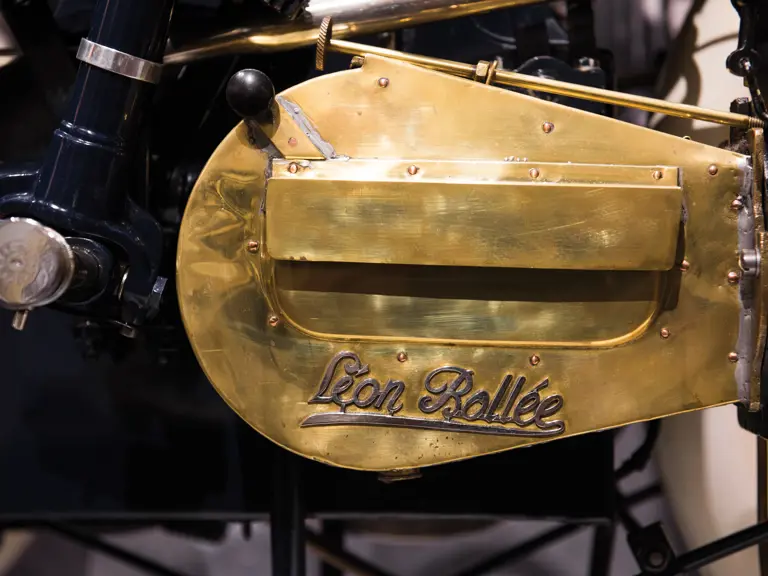
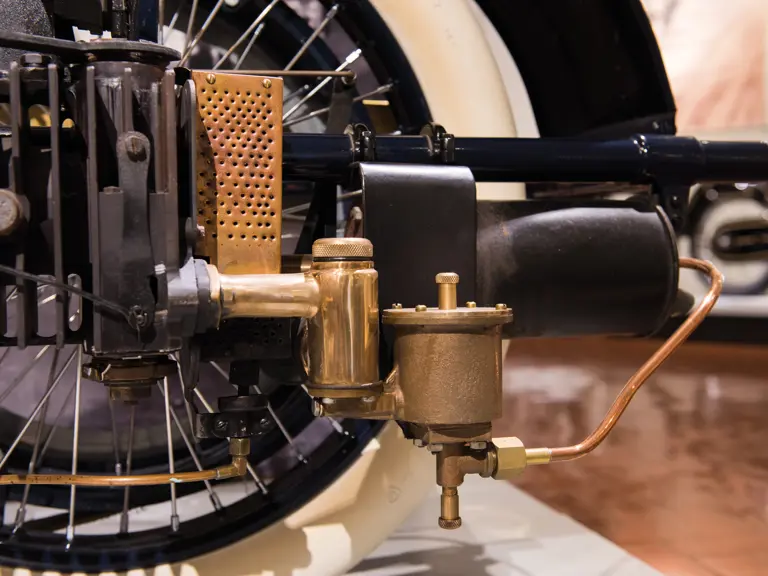
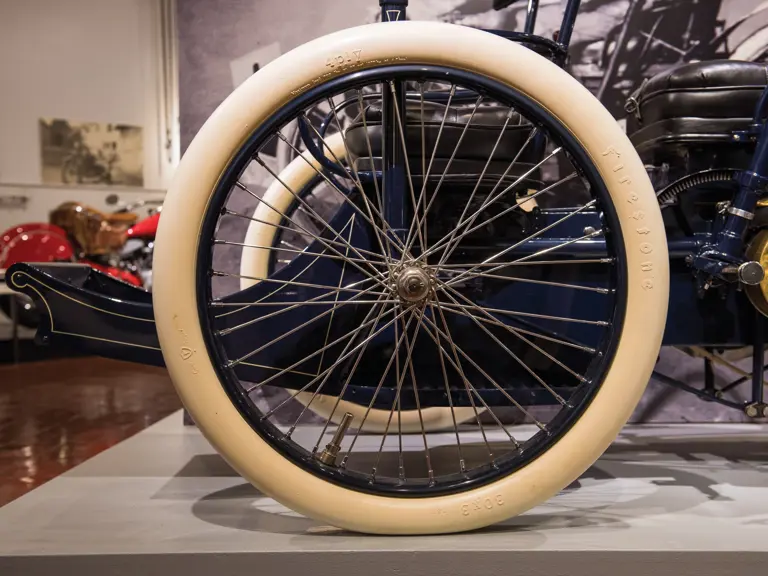
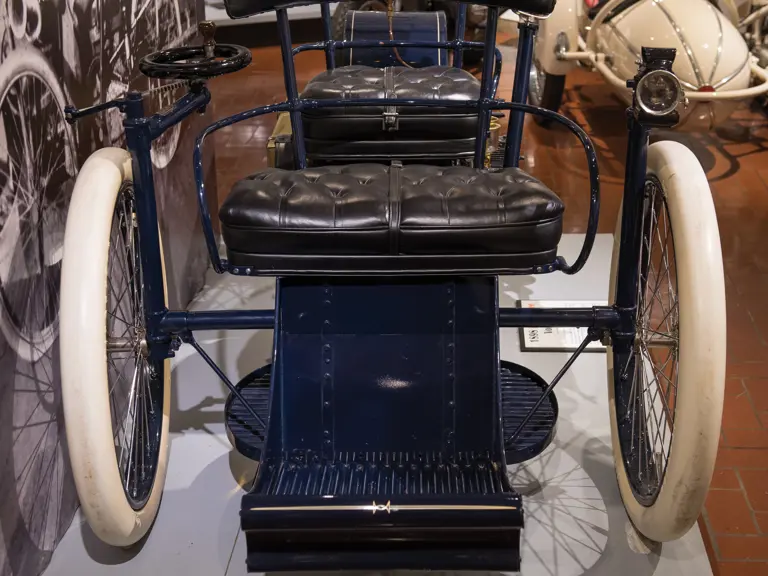
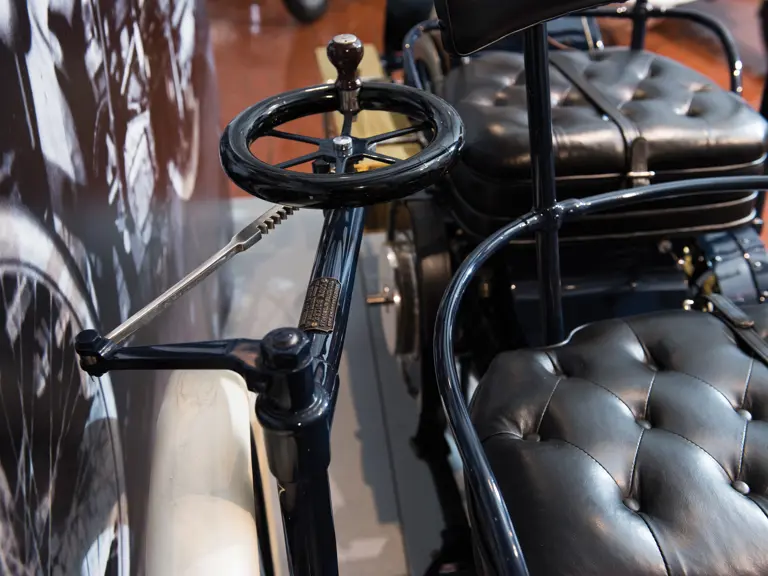
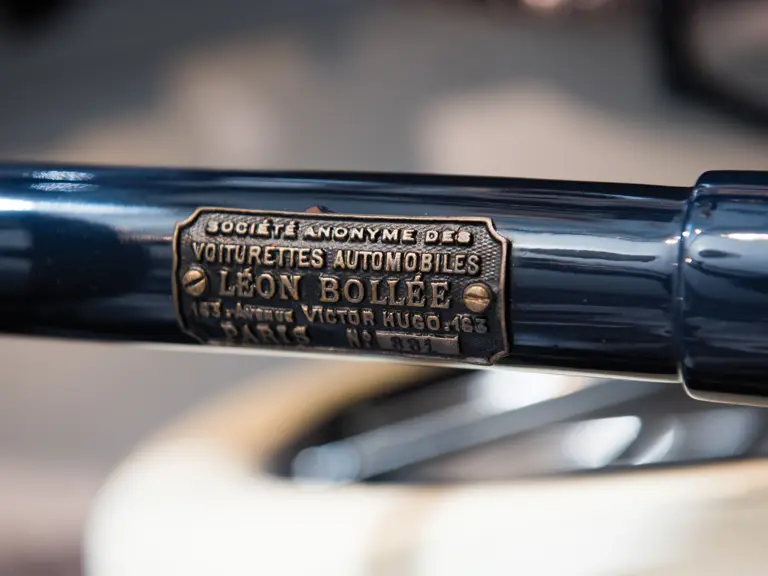
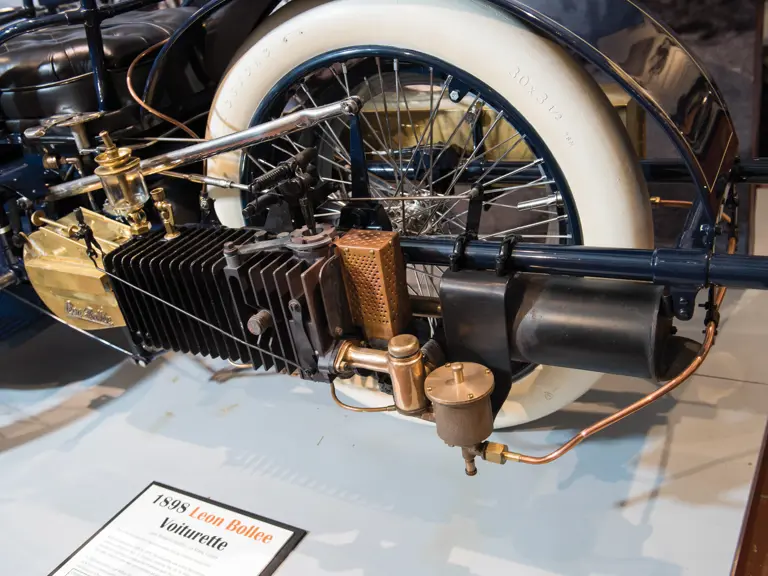
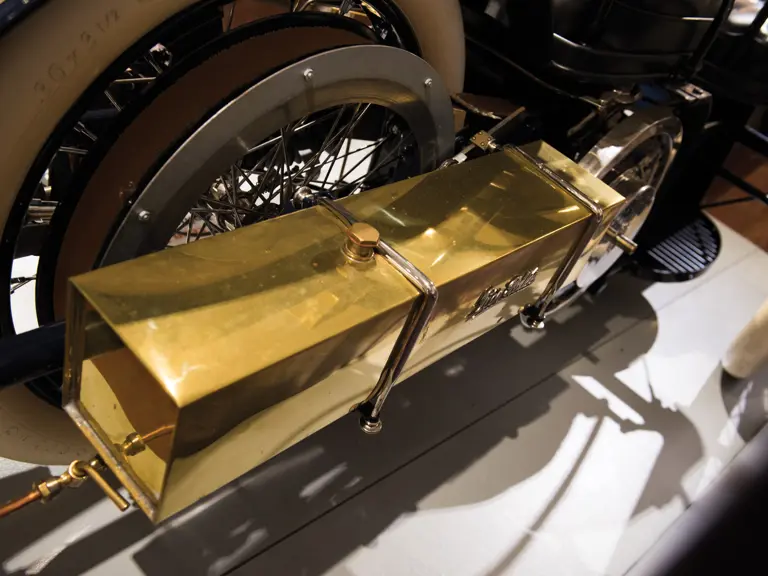
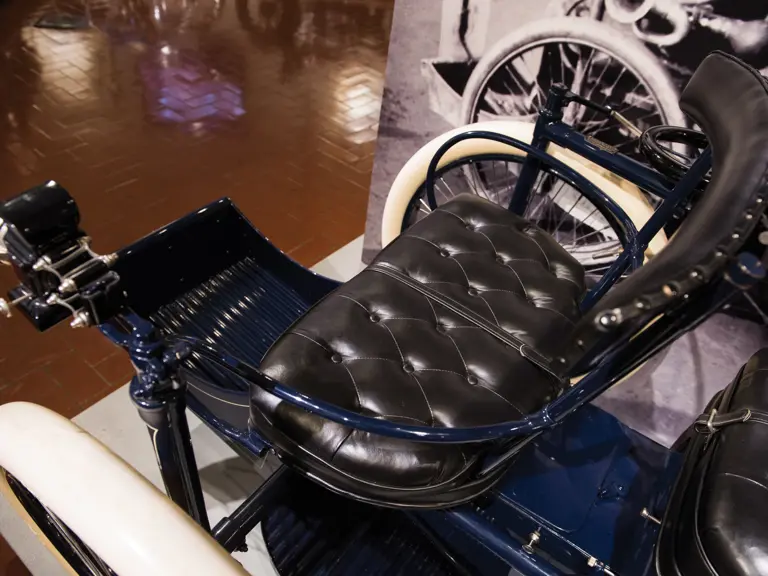


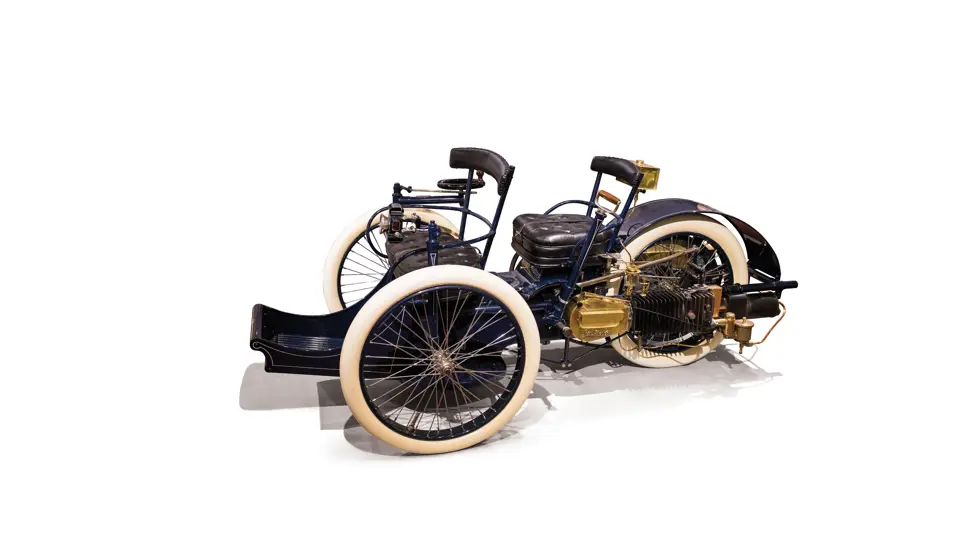
 | Hershey, Pennsylvania
| Hershey, Pennsylvania
